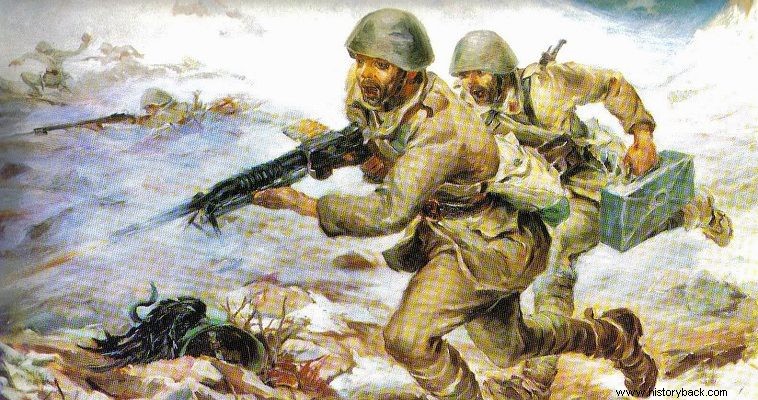
At the start of the war the Greek Army had 12,200 machine guns of three types. The Model 1915 Chauchat submachine gun was by far the worst submachine gun of all time, although it was used by almost all Allied armies in World War I.
The Greek Army procured them in 1917 (about 3,500 of them). The rest were bought during the Asia Minor Campaign. In 1940 there were 6,000. The gun was almost useless. It was prone to constant engagements, even with a little dust, let alone the fighting conditions in Northern Epirus and Western Macedonia.
Papagos intended to withdraw it, but it was not possible to procure newer weapons. So it was decided to at least make an attempt to improve it, which partially paid off. The Greek Chauchats had new barrels and new magazines, as well as new sights. Nevertheless, they remained a permanent source of dissatisfaction for their users.
They were allocated to the 24th Infantry Regiment (SP) of the III Infantry Division (MP), the 92nd SP of the VII MP, the 15th and 85th SP of the VIII MP, the 84th, 86th and 87th SP of the XII MP, the 35th SP and the Dodecanese Regiment of the 12th MP, as well as in all the regiments of the XVIII MP. The gun chambered the French 8mm cartridge.
It weighed 9.2 kg, had an effective range of 400 m and was fed from a 20-round magazine. It is worth noting that after the end of World War I, the French Parliament held a sworn command examination on the acceptance of this weapon on duty!
The 1926 model Hotchkiss machine gun, of 6.5 mm. it was the best of the Greek Army. 6,000 of these very good submachine guns were purchased between 1926-28. They were made to fire the Greek 6.5mm cartridge. the same cartridge used in the main rifle of the Greek Army, the famous Mannlicher-Schönauer.
The weapon was 1.2 m long and weighed 8.7 kg. It was fed by a 15-round metal tape. They had a maximum range of 3,300 m combat 1,000 m and active 500 m It was a robust and reliable weapon. The majority of combat formations were equipped with it. Based on the regulation of its use, it fired either shot by shot, or in bursts of 6-8 cartridges, at a distance of up to 1,400 m (slope). It could also fire anti-aircraft fire against targets flying at a height of less than 600 m.
Hotchkiss machine guns of the 1922 model, of 7.92 mm, were also used. 1,500 of these very fine machine guns were ordered, but the French finally delivered only 200, and these after personal harassment of the French General Gamelin, by Al. Papago. They were reliable and robust weapons, almost identical to the previous ones, with the difference that they had a caliber of 7.92 mm.
Papagos had attempted, as mentioned, to rid the Army of the useless Chauchats. In addition to the 1,500 Hotchkiss machine guns he had ordered from France he had requested another 4,450 from the British and Americans. Of these only about 1,000 7.7mm Hotchkiss machine guns were delivered. and those in the middle of the war.
However, even the 1,000 that were allocated were given without critical accessories, which the War Material Administration (EPH) undertook to manufacture. Thus by the end of operations only 330 of them had been allocated to the units.
The solution to some extent was provided by the Italians, who left hundreds of Breda machine guns as booty in the hands of the Greek Army. A few more were sent by the British – Italian-occupied North Africa. Of the 2,300 that were eventually found in the possession of the Greek Army, the EYP converted approximately 2,000 of which were allocated to the units.
